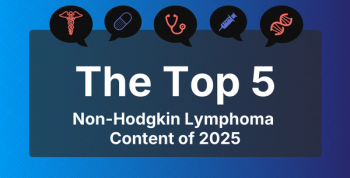
Cadillac Tax Would Impact 1 in 5 Employers Who Offer Coverage
If the High-Cost Plan Tax, also known as the Cadillac tax, goes into effect in 2022, 21% of employers who offer coverage would be impacted, and that percentage would increase fairly rapidly by 2030.
Approximately one-fifth of employers who offer health coverage would be impacted by the High-Cost Plan Tax (HCPT), known as the Cadillac tax, which is slated to go into effect in 2022, according to an analysis
The Cadillac tax was included in the Affordable Care Act (ACA) and targets expensive insurance plans to limit unnecessary healthcare utilization. Employer-sponsored plans that exceed the threshold, which was originally $10,200 for individual coverage and $27,500 for family coverage, would be taxed 40%. The caps grow annually with inflation, with the Congressional Budget Office estimating that the thresholds will be $11,200 for individual coverage and $30,100 for family coverage in 2022. The tax was originally set to take effect in 2018 and has been delayed twice.
Both Republicans and Democrats oppose the tax, and the House is expected to
“In addition to raising revenue to fund the expansion of coverage under the ACA, the HCPT provides powerful incentives to control health plans costs over time, whether through efficiency gains or shifts in costs to workers in the form of higher deductibles and other patient cost-sharing,” wrote the researchers. “While many employers do not expect that the tax will take effect in 2022, others are already amending their health programs in anticipation.”
If the tax does take effect in 2022, the percentage of employers with plans reaching the tax threshold would increase fairly rapidly over time, according to data from the 2018 Kaiser Employer Health Benefits Survey. The researchers used the data to estimate the share of current plans that might meet the definition of “high cost” over time, assuming modest premium growth and no changes in plan design.
The percentage of employers with a plan surpassing the threshold would hit 25% in 2025 and 37% in 2030. According to the researchers, this growth would occur because the assumed premium growth of 4.9% per year is higher than inflation projections (approximately 2.4%). However, if premiums increase as a slower rate than projected, the percentage of employers with a plan hitting the threshold would be smaller.
The researchers calculated the total cost for each plan by adding the total plan premium, the employer share of the health savings account, and the permitted amount employees can contribute a Flexible Spending Account (FSA). Because employees have the choice to contribute to an FSA, the researchers calculated estimates with and without FSA amounts included in the total cost.
It is estimated that 21% of employers would have at least 1 plan that exceeds the HCPT threshold in 2022, and when FSA contributions are included, that percentage increases to 31%. Including these FSA contributions would result in 38% of employers having a plan reach the threshold in 2025 and almost half (46%) in 2030.
“The impact of adding the FSA contributions is substantial because the maximum FSA contribution employees can elect (up to an estimated $2900 in 2022) is quite large relative to the threshold,” wrote the researchers.
Newsletter
Stay ahead of policy, cost, and value—subscribe to AJMC for expert insights at the intersection of clinical care and health economics.








































